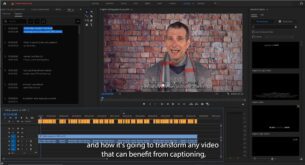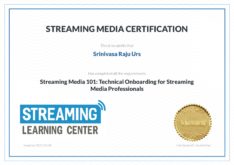As you probably know, Googles VP9 is the successor to VP8 in WebM and a competitive technology to HEVC/H.265. I reported here that patent claims from Nokia present a red flag to potential adapters, but Google keeps pressing ahead, and lots of potential users are taking notice.
CNET’s Steven Shankland has been following the release closely, and recently reported:
SAN FRANCISCO — Google is nearly done with its VP9 video technology, and it wants the world to use it. At its Google I/O conference Wednesday, company employees made the case for the royalty-free, open-source technology as a higher-quality alternative to today’s dominant video codec, H.264. Moving to VP9 — available now in testing on Chrome and YouTube — will save bandwidth costs.
“If you adopt VP9, as you can very quickly, you’ll have tremendous advantages over anyone else out there using H.264 or VP8, (its predecessor),” said VP9 engineer Ronald Bultje in a talk here at Google’s developer conference. “You can save about 50 percent of bandwidth by encoding your video with VP9 vs. H.264.”
You can read the rest of the article here.
Once VP9 is out, you can expect Mozilla and Opera to quickly adapt it, and Microsoft and Apple to ignore it, which is what happened with VP8 in WebM. Though support for VP9 in YouTube sounds promising, VP8 had similar support, and has won very meager adaption.
Still, Google is coming to the table with VP9 against HEVC/H.265 much earlier in the game than VP8, which had no chance against the already entrenched H.264. In contrast, HEVC/H.265 is still in flux, with no royalty policies or even a fixed royalty pool in place.
Given Nokia’s aggressive tactics, however, it would be imprudent for any deep-pocketed organization to start using VP9 before the royalty picture clears. Of course, you can say the same about HEVC/H.265, though streaming media encoding vendors and other infrastructure producers are moving forward with HEVC/H.265 support, trusting that the royalty policies will sort themselves out in the near term.
 Streaming Learning Center Where Streaming Professionals Learn to Excel
Streaming Learning Center Where Streaming Professionals Learn to Excel







